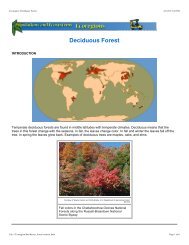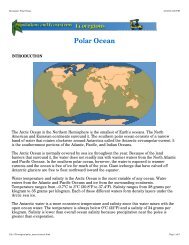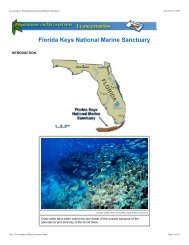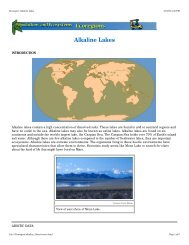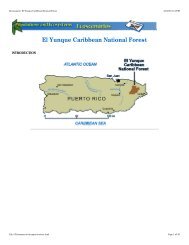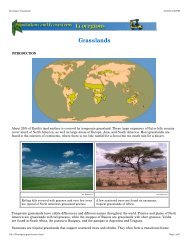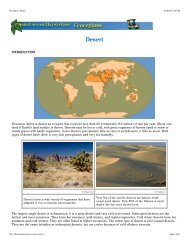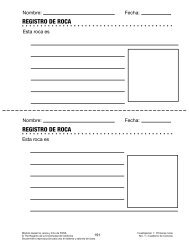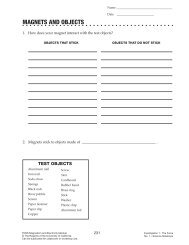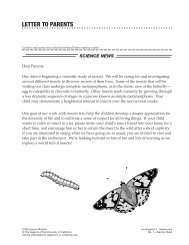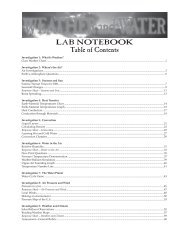Ecoscenarios Combined - FOSSweb
Ecoscenarios Combined - FOSSweb
Ecoscenarios Combined - FOSSweb
Create successful ePaper yourself
Turn your PDF publications into a flip-book with our unique Google optimized e-Paper software.
Ecoscenario: Monterey Bay National Marine Sanctuary<br />
4/16/03 3:22 PM<br />
Art Explosion<br />
Nudibranchs, related to octopuses and snails,<br />
graze on kelps.<br />
Art Explosion<br />
Hermit crabs scavenge for detritus for food and<br />
abandoned shells for shelter on the rocky<br />
substrate.<br />
The canopy layer is closest to the surface. Here, the kelp blades bob on the surface waves. Colorful nudibranchs<br />
(NEW•duh•braynks) slide across the kelp blades. Nudibranchs can be found in the substrate layer as well. Some kelp<br />
fronds are covered with small encrusting bryozoans. Zooplankton and phytoplankton float in the water near the surface,<br />
moving with the current.<br />
The sea otter makes its home in the canopy. The sea otter is a marine mammal up to 1.2 meters (4 feet) long and related<br />
to weasels. It is very rarely seen out of the water. To keep warm in the cold Pacific waters, otters have extremely dense<br />
fur, which traps air between individual hairs. This keeps the otter's skin dry as it dives to the ocean floor for food. Sea<br />
otters have a broad diet of shellfish, sea urchins, crab, fish, and snails. Otters use rocks, shells, and even discarded<br />
glass soda bottles as tools to help break open urchins and shellfish. They may eat up to one-quarter of their weight each<br />
day.<br />
Courtesy of Monterey Bay National Marine Sanctuary<br />
Sea otters float atop the kelp forest at Cannery Row.<br />
Annual productivity, or the amount of energy provided by the producers in this ecosystem, changes with the amount of<br />
upwelling. Kelp forests are one of the most productive ecosystems. During upwelling the productivity is off the chart. The<br />
average throughout the year is over 7000 kilocalories/square meter/year.<br />
file:///Ecoscenario/monterey/content.html<br />
Page 9 of 14



